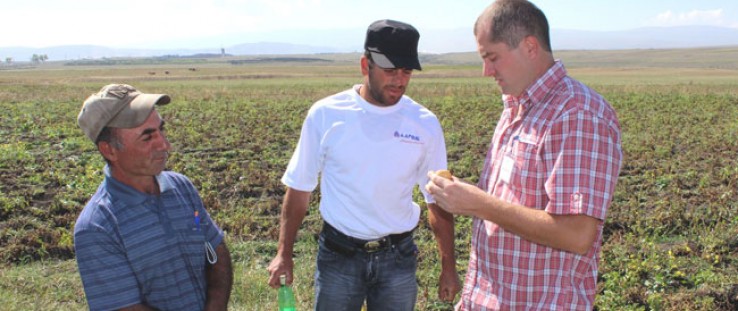 Potato farmers in the Samtskhe Javakheti region of Georgia discuss crop quality.
USAID
Potato farmers in the Samtskhe Javakheti region of Georgia discuss crop quality.
USAID
 Potato farmers in the Samtskhe Javakheti region of Georgia discuss crop quality.
USAID
Potato farmers in the Samtskhe Javakheti region of Georgia discuss crop quality.
USAID
Merujhan Karakhanian, a 46-year-old ethnic Armenian farmer from the village of Diliska in Georgia, works hard to grow his small business. He harvests 18 tons of potatoes on less than one hectare of land. In a good year, Karakhanian makes around $5,500 in potato sales, slightly above the average annual household income in Georgia. This is the only source of income for his family of seven, which is highly dependent on the harvest season. Hail or frost can have devastating effects on his crops and for his family.
In early 2012, Karakhanian decided to improve his yield and applied for a bank loan to purchase new potato seeds. But without collateral, his loan application was refused.
That is where USAID stepped in. The Agency’s Economic Prosperity Initiative partnered with a Georgian bank and insurance company in 2012 to implement a three-year pilot project that offers a loan and crop insurance product, rolled into one. In it, an insurance policy serves as alternative collateral for a loan.
Access to finance is one of the main challenges for Georgia’s farmers, according to Rezo Ormotsadze, a USAID project manager. “For example, more than half of the Georgian workforce lives in rural areas and depends heavily on farming for their livelihood,” he says. “Agriculture is also a contributor to Georgia’s GDP, but the total amount of loans disbursed to the agriculture sector is only about 1 percent of [the] total Georgian loan portfolio.”
When paired with a loan, crop insurance reduces risk for lenders who would otherwise consider the agricultural sector too uncertain to finance. It provides enough income to farmers to pay back their debts if part or all of a crop is lost due to weather disasters such as frost, hail or excessive rain.
“In many developed countries, such as the United States, governments subsidize the crop insurance policies that routinely protect the nation’s growers. But in much of the developing world, crop insurance is a fairly new phenomenon, and Georgia is no exception,” says Ormotsadze.
The integrated loan and insurance product is the first of its kind in Georgia—a country where more people depend on agriculture than anything else. By pooling resources, USAID anticipates that banks and insurance companies will be able to reduce administrative costs and lower traditionally high premium rates for the nation’s growers.
“This project not only helps increase access to finance for farmers—who until now had no other option—it also sets a precedent for buying crop insurance that stabilizes farmers’ income in case of natural disasters like the terrible hail storm this past summer that destroyed tens of thousands of hectares of land,” says Ormotsadze, referring to the 2012 summer storms.
Agriculture accounts for only 9 percent of Georgia’s GDP, yet it employs and provides income to more than half the country’s population. For very small farmers, the monthly household income averages only about $50. Any unexpected agricultural losses can quickly add up.
An Industry Is Born
Through the pilot, USAID is aiming to improve access to credit for Georgian farmers while kick-starting a domestic crop insurance industry.
“When the project began, insurers had limited experience with agricultural insurance and prescribed very conservative policy terms and conditions to manage their risks,” says Ormotsadze. “The insurers set premium rates based on their own estimates, and without any government subsidies available, farmers—especially smallholder farmers—could not afford the high premium rates.”
As USAID began to connect Georgian farmers and agribusinesses to high-value markets, it became clear that crop insurance would be a key part of building up the sector.
“Competitive agricultural production cannot be accomplished without access to significant inputs (tools and technology). Farmers need capital to purchase them, and this is where we come in—we offer risk-mitigating tools like crop insurance to help farmers obtain finance and lower their risk exposure,” says Nutsa Koguashvili, head of the sales department at Aldagi BCI, the insurance company that is part of the USAID pilot.
USAID designed and conducted a three-week crop-insurance training program in partnership with the Georgian Insurance Association to strengthen the understanding of crop insurance by insurers, commercial banks and agricultural producers. Insurance providers were helped to design policy terms and conditions for specific crops such as potatoes, onions and hazelnuts.
“This USAID project helps create mutually beneficial linkages between farmers, us (agricultural insurance providers), and Georgian lending institutions,” says Koguashvili. “I believe it is an excellent opportunity for insurance companies to contribute to the growth of the Georgian agricultural sector. The Ministry of Agriculture is also taking notice and the first dialogue finally began about the potential public subsidy for crop insurance.”
Irakli Moistsrapishvili, agricultural loan coordinator at the Bank of Georgia, says that these new tools will help lending institutions consider “riskier” businesses like small and medium farms. “We also can share our administrative costs with the insurance company while serving new customers in the agricultural sector—a true win-win situation,” he says.
During the pilot project, the crop insurance premium (roughly $210 for a potato grower) is shared between USAID, the Bank of Georgia and farmers, who pay only a small percentage in their first year. Over three years, the portion funded by USAID and the Bank of Georgia will gradually decrease; farmers will cover 75 percent of the annual premium by the third year of the pilot.
The scheme incentivizes farmers to use crop insurance to obtain loans without collateral, while minimizing risks to their households. Agency officials anticipate that, once the pilot project ends, farmers will have enough incentive to buy crop insurance themselves.
Early Signs of Success
After taking part in the project, Karakhanian purchased insurance that made him eligible for a $3,620 loan that he had previously been denied. Another 40 potato growers in his area were also insured and offered loans. Over three years, USAID expects around $1.2 million of loans to 1,000 farmers to be insured, including for crops such as hazelnuts, mandarins, potatoes, onions, garlic, carrots and beetroots.
After a year, the project mobilized $7.9 million in total loan value.
USAID has since expanded the pilot to include additional commercial banks, which are now learning how to design integrated loan and insurance products, and the Georgian Government is studying possible future premium subsidies.
Karakhanian has already learned the value of insuring his potatoes. In the summer of 2012, severe weather and hail caused millions of dollars in damage to farms across Georgia. While the damage was not substantial enough to trigger the insurance indemnity for Karakhanian, two neighboring farms were badly affected by the storm. One farmer, Karapet Ezoyan, had purchased crop insurance through the USAID project and was compensated, while his uninsured neighbor suffered from his losses.
Despite the damage, Ezoyan says: “With crop insurance, I received … $5,000, which was enough to pay back the bank. Because the crops were totally damaged by hail, this compensation saved me from default. Now I can continue farming and provide for my family. This could not have been possible without the insurance.”
Today, Karakhanian feels secure. His insurance policy has paid dividends. He was able to generate more income for his household thanks to the better quality seeds he purchased with the loan. And importantly, he can rest a bit easier the next time the skies open.
“Thanks to USAID’s pilot project, my business can grow. I know the insurance can cover the damage, and I will not be forced to abandon the business like many farmers had been forced to do before,” he says.
Tamara Razmadze is with Deloitte Consulting.







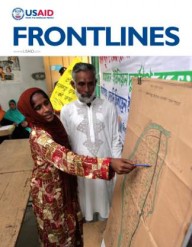

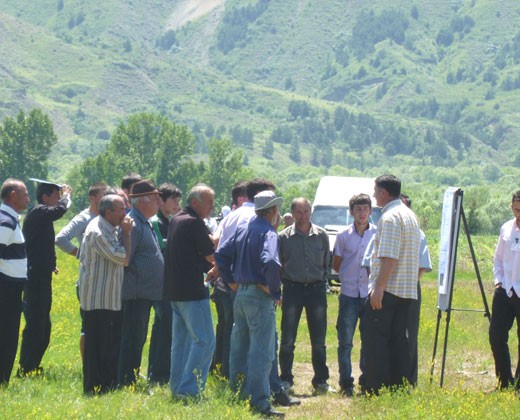
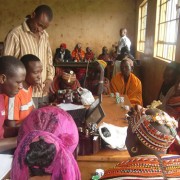
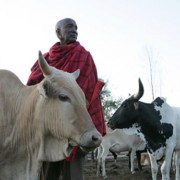
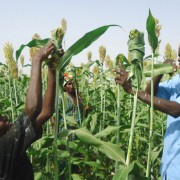
Comment
Make a general inquiry or suggest an improvement.